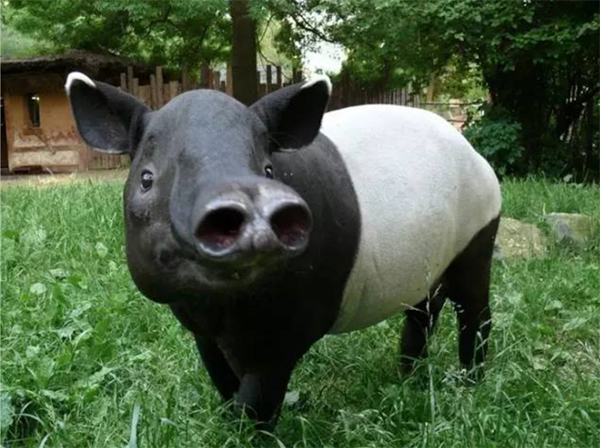Tapirus indicus
IUCN
LCBasic Information
Scientific classification
- name:Tapirus indicus
- Scientific Name:Asian tapir,Indian tapir
- Outline:Ungulata
- Family:Perissodactyla Tapiridae Tapirus
Vital signs
- length:1.8-2.5 m
- Weight:250-540kg
- lifetime:20-30 years
Feature
The largest species of tapir, it has a nose like an elephant, ears like a horse, a head like a pig, hind legs like a rhinoceros, and a body like a bear, but not all of them are like the same species, so people call it "five-unlike".
Distribution and Habitat
The Malay tapir is distributed in the Malay Peninsula in Asia, Sumatra in Indonesia, southern Thailand and Tanassa Forest in southern Myanmar. Its habitat includes various forests, low-altitude tropical rainforests, tropical jungles and swamps at an altitude of 2400-4500 meters. These include lowland and alpine forests, alpine cloud forests, alpine shrubs and open grasslands. It generally chooses areas close to water sources. It is distributed in both primary and secondary degraded forests.
Appearance
The Malayan tapir is the largest type of tapir, with a body length of 1.8-2.5 meters, a shoulder height of 90-120 cm, a tail length of 5-10 cm, and a weight of 250-540 kg. It looks very strange and interesting, with a dull look. Some people say that its ears are like a horse, its hind legs are like a rhinoceros, its body is like a pig, and its nose is like an elephant. The body is round and fat, the skin is very thick, the head is much larger than that of a pig, the neck is thick, the snout is extended, protruding into a cylindrical shape, soft and drooping, although not as good as an elephant's trunk, it is larger than a pig's snout. Much larger and able to expand and contract freely. The eyes are small and located on the side of the head, and they look lifeless, as if they are always about to wake up from drowsiness. The ears are large, erect, oblong, and have a tuft of bristles in the middle, but they are not very mobile. The limbs are stout, with 4 toes on the forelimbs,
Details
The body color of an adult Malay tapir is the classic "black and white", with no other colors. The head, shoulders, and limbs are all black, but the middle and back of the body is white, as if wearing a white "vest". The overall physique is strong, and at first glance it is a bit ugly and cute.

Malay tapirs are water-loving animals. They never leave the waterside of the forest and often stay in the water or mud. First, to escape from enemies, and second, to cool the body. When swimming in the water, they can extend their long noses out of the water to breathe. They are also very agile on land, good at running, climbing, and landslides, and their noses are almost close to the ground when walking. They are solitary and mostly wander alone in the forest, but occasionally they can be found in small groups of 2-3. They do not like the stimulation of strong light, and can only come out at night, and hide in dark places to rest during the day. They have poor vision, but their hearing and sense of smell are very sensitive.
Although the Malayan tapir looks stout and strong, it is actually a vegetarian, never touches meat, and is not picky about food. It likes to eat young shoots, leaves, fruits, grass, and even aquatic plants.
The Malayan tapir does not have hard horns, sharp claws, sharp teeth and other weapons for attack and self-defense. It is a very timid, shy and kind animal. In order to survive, it is born with extraordinary swimming and diving skills, with a very graceful posture, and can also walk for a long time in shallow water as if walking on flat ground. Whenever it encounters a natural enemy, it lowers its head and runs. In addition to using its body shape suitable for walking through the bushes and desperately getting into the forest to get rid of its natural enemy, it often quickly escapes to the water to hide, leaving those beasts that cannot swim or are not familiar with the water helpless. When there is really no way to escape, it has to stand up to fight, scare the opponent, rush over desperately, knock the opponent down, and then bite or step on it with its mouth. It also likes to roll in the mud. After each roll, its body is covered with mud stains. This is because its tail is short and cannot prevent and repel mosquitoes and flies from biting, so it coats its body surface with a protective layer of mud.

Wild Malayan tapirs have become endangered species and are in danger of extinction. In the Convention on International Trade in Endangered Species of Wild Fauna and Flora, Asian tapirs are listed in Appendix I. Therefore, many countries have established nature reserves to allow these most unique animals in the world to reproduce, but the erosion and destruction of their habitats caused by the continuous development of human economic activities has also had a serious impact on their fate.








